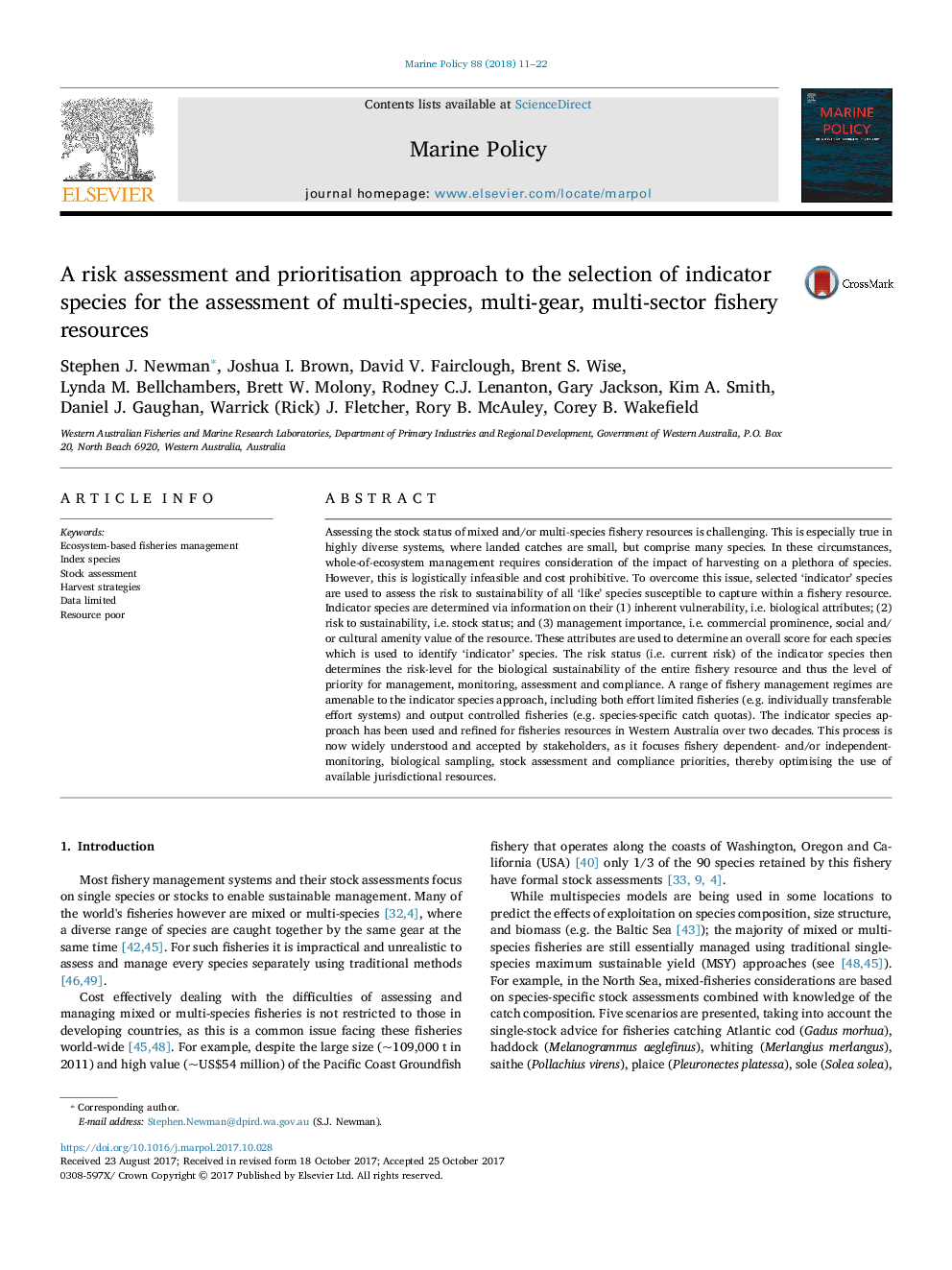ترجمه فارسی عنوان مقاله
ارزیابی خطر و رویکرد اولویت بندی به انتخاب گونه های شاخص برای ارزیابی منابع ماهیگیری چندگانه، چند منظوره و چند بخش
عنوان انگلیسی
A risk assessment and prioritisation approach to the selection of indicator species for the assessment of multi-species, multi-gear, multi-sector fishery resources
| کد مقاله | سال انتشار | تعداد صفحات مقاله انگلیسی |
|---|---|---|
| 95320 | 2018 | 12 صفحه PDF |
منبع

Publisher : Elsevier - Science Direct (الزویر - ساینس دایرکت)
Journal : Marine Policy, Volume 88, February 2018, Pages 11-22
ترجمه کلمات کلیدی
مدیریت ماهیگیری مبتنی بر اکوسیستم، گونه های فهرست ارزیابی سهام، استراتژی های برداشت، داده محدود است منابع فقیر،
کلمات کلیدی انگلیسی
Ecosystem-based fisheries management; Index species; Stock assessment; Harvest strategies; Data limited; Resource poor;

